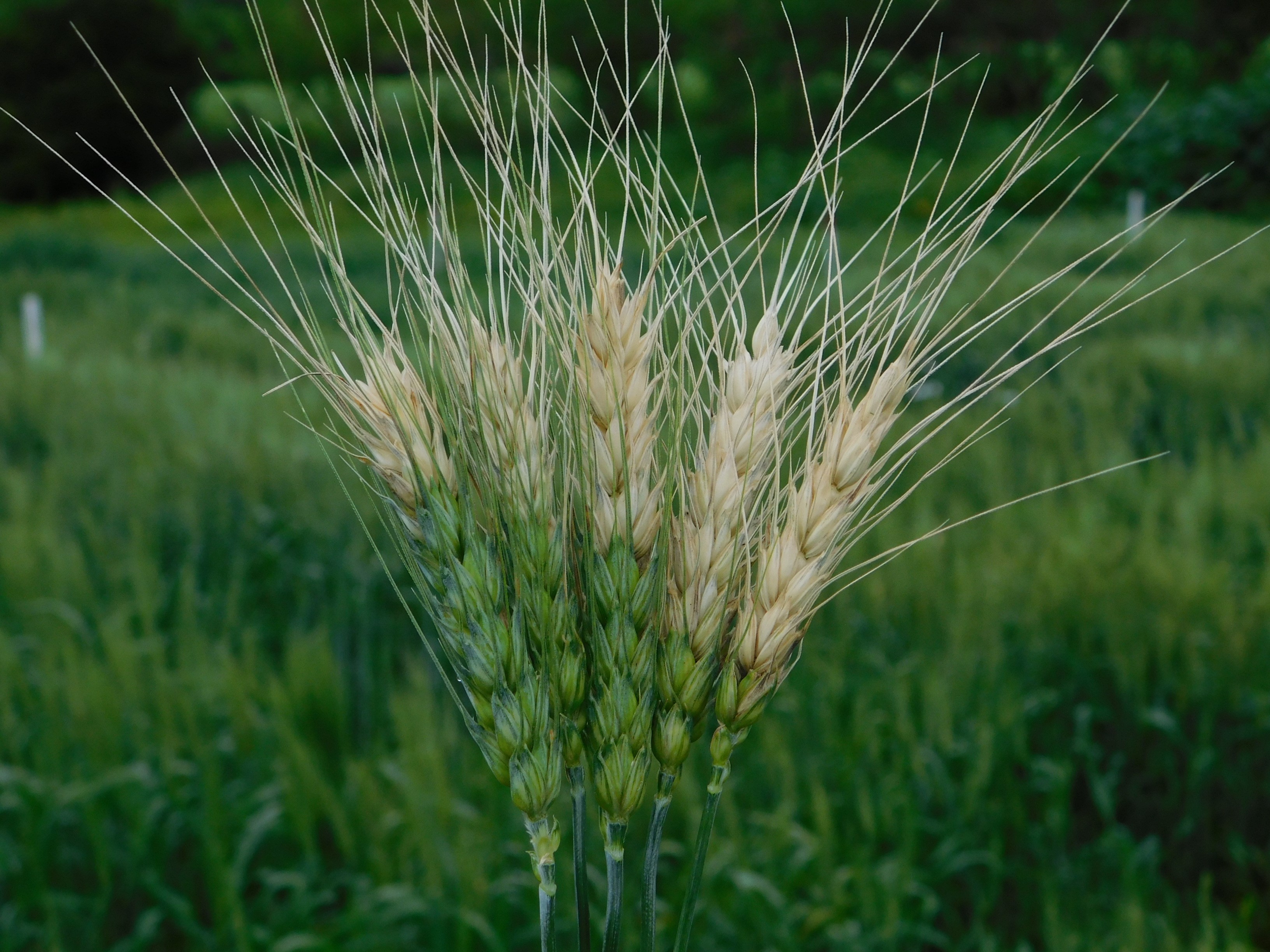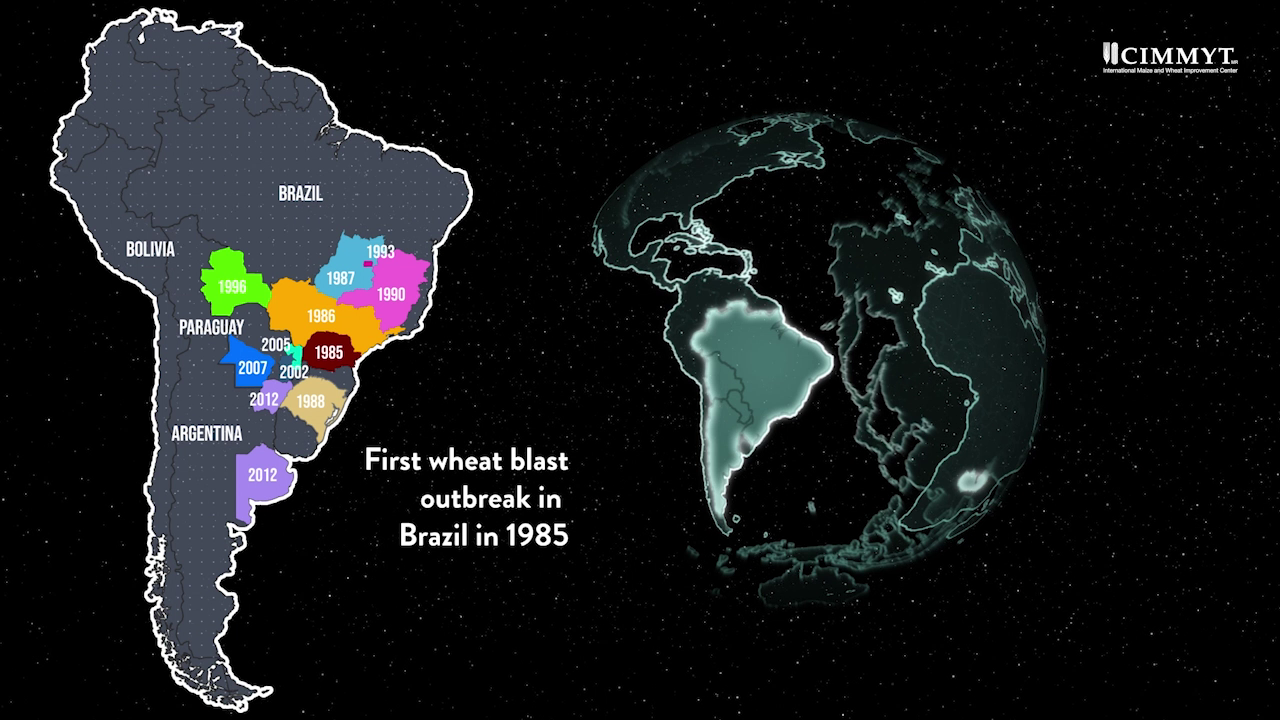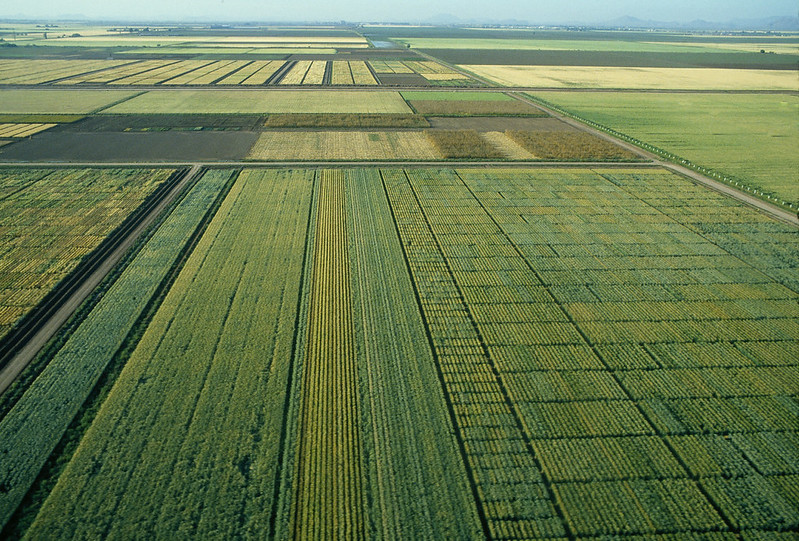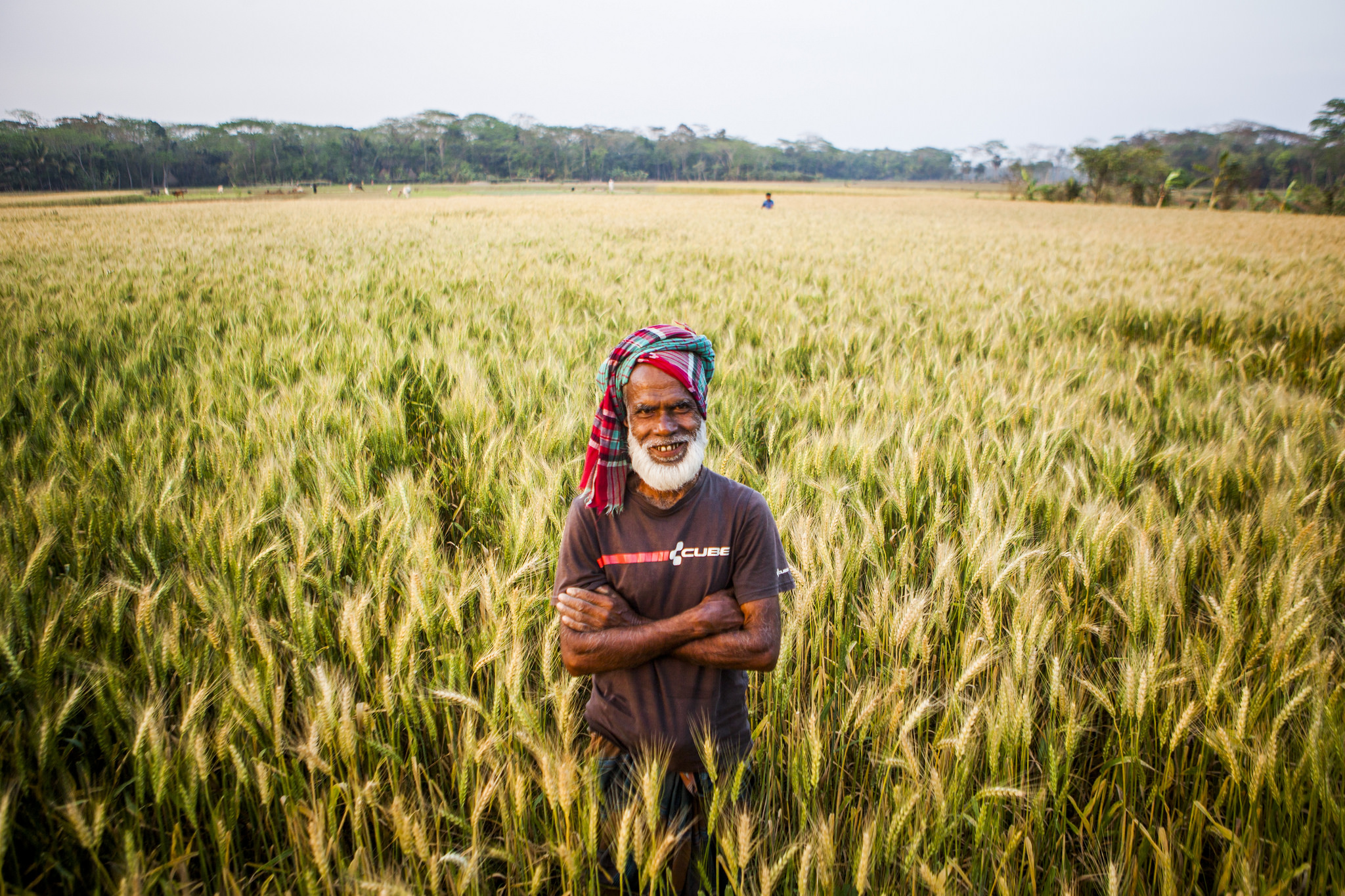As wheat blast continues to infect crops in countries around the world, researchers are seeking ways to stop its spread. The disease — caused by the Magnaporthe oryzae pathotype Triticum — can dramatically reduce crop yields, and hinder food and economic security in the regions in which it has taken hold.
Researchers from the International Maize and Wheat Improvement Center (CIMMYT) and other international institutions looked into the potential for wheat blast to spread, and surveys existing tactics used to combat it. According to them, a combination of methods — including using and promoting resistant varieties, using fungicides, and deploying strategic agricultural practices — has the best chance to stem the disease.
The disease was originally identified in Brazil in 1985. Since then, it has spread to several other countries in South America, including Argentina, Bolivia and Paraguay. During the 1990s, wheat blast impacted as many as three million hectares in the region. It continues to pose a threat.
Through international grain trade, wheat blast was introduced to Bangladesh in 2016. The disease has impacted around 15,000 hectares of land in the country and reduced average yields by as much as 51% in infected fields.
Because the fungus’ spores can travel on the wind, it could spread to neighboring countries, such as China, India, Nepal and Pakistan — countries in which wheat provides food and jobs for billions of people. The disease can also spread to other locales via international trade, as was the case in Bangladesh.
“The disease, in the first three decades, was spreading slowly, but in the last four or five years its pace has picked up and made two intercontinental jumps,” said Pawan Singh, CIMMYT’s head of wheat pathology, and one of the authors of the recent paper.
In the last four decades, wheat blast has appeared in South America, Asia an Africa. (Video: Alfonso Cortés/CIMMYT)
The good fight
Infected seeds are the most likely vector when it comes to the disease spreading over long distances, like onto other continents. As such, one of the key wheat blast mitigation strategies is in the hands of the world’s governments. The paper recommends quarantining potentially infected grain and seeds before they enter a new jurisdiction.
Governments can also create wheat “holidays”, which functionally ban cultivation of wheat in farms near regions where the disease has taken hold. Ideally, this would keep infectable crops out of the reach of wheat blast’s airborne and wind-flung spores. In 2017, India banned wheat cultivation within five kilometers of Bangladesh’s border, for instance. The paper also recommends that other crops — such as legumes and oilseed — that cannot be infected by the wheat blast pathogen be grown in these areas instead, to protect the farmers’ livelihoods.
Other tactics involve partnerships between researchers and agricultural workers. For instance, early warning systems for wheat blast prediction have been developed and are being implemented in Bangladesh and Brazil. Using weather data, these systems alert farmers when the conditions are ideal for a wheat blast outbreak.
Researchers are also hunting for wheat varieties that are resistant to the disease. Currently, no varieties are fully immune, but a few do show promise and can partially resist the ailment depending upon the disease pressure. Many of these resistant varieties have the CIMMYT genotype Milan in their pedigree.
“But the resistance is still limited. It is still quite narrow, basically one single gene,” Xinyao He, one of the co-authors of the paper said, adding that identifying new resistant genes and incorporating them into breeding programs could help reduce wheat blast’s impact.

The more the merrier
Other methods outlined in the paper directly involve farmers. However, some of these might be more economically or practically feasible than others, particularly for small-scale farmers in developing countries. Wheat blast thrives in warm, humid climates, so farmers can adjust their planting date so the wheat flowers when the weather is drier and cooler. This method is relatively easy and low-cost.
The research also recommends that farmers rotate crops, alternating between wheat and other plants wheat blast cannot infect, so the disease will not carry over from one year to the next. Farmers should also destroy or remove crop residues, which may contain wheat blast spores. Adding various minerals to the soil, such as silicon, magnesium, and calcium, can also help the plants fend off the fungus. Another option is induced resistance, applying chemicals to the plants such as jasmonic acid and ethylene that trigger its natural resistance, much like a vaccine, Singh said.
Currently, fungicide use, including the treatment of seeds with the compounds, is common practice to protect crops from wheat blast. While this has proven to be somewhat effective, it adds additional costs which can be hard for small-scale farmers to swallow. Furthermore, the pathogen evolves to survive these fungicides. As the fungus changes, it can also gain the ability to overcome resistant crop varieties. The paper notes that rotating fungicides or developing new ones — as well as identifying and deploying more resistant genes within the wheat — can help address this issue.
However, combining some of these efforts in tandem could have a marked benefit in the fight against wheat blast. For instance, according to Singh, using resistant wheat varieties, fungicides, and quarantine measures together could be a time-, labor-, and cost-effective way for small-scale farmers in developing nations to safeguard their crops and livelihoods.
“Multiple approaches need to be taken to manage wheat blast,” he said.


 Nutrition, health and food security
Nutrition, health and food security 
